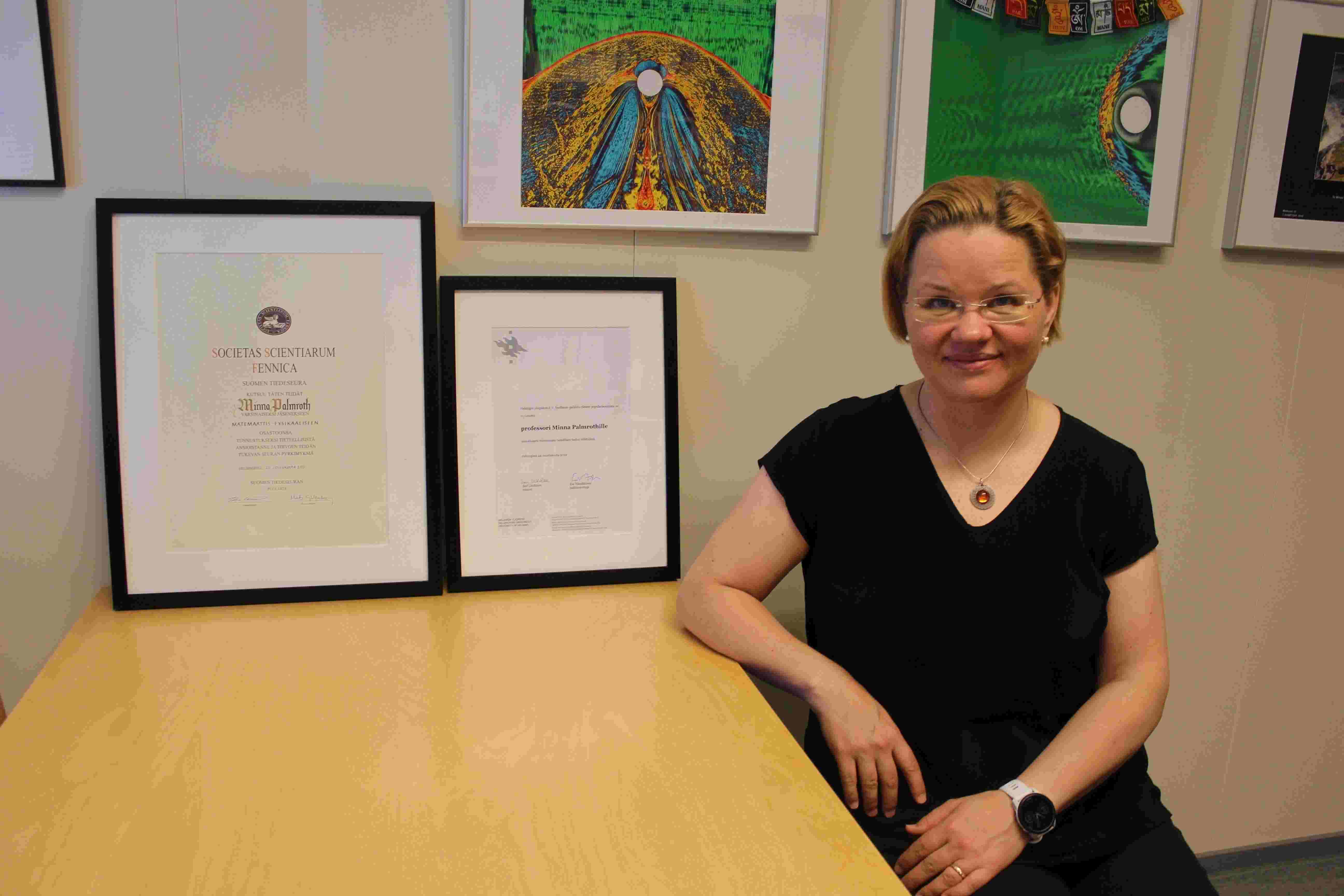”We have an obligation to minimize the adverse effects of unsustainable space activities"

Minna Palmroth is a professor of computational space physics at the University of Helsinki and the director of the Finnish Centre of Excellence in Research of Sustainable Space. In 2018, the centre was founded in response to the increasing congestion of near-Earth space. In the interview, Palmroth discusses space sustainability and reflects the topic from the perspectives of intergenerational and global justice.
Lately, the sustainable use of space has emerged as a major topic of discussion – what does the concept entail?
Minna Palmroth: Even though space sustainability has been on the agenda of international space forums for a few years already, the scientific community has not yet reached a peer-reviewed definition of the concept. Space sustainability is often understood in terms of the space debris problem – considering our planetary resources, solutions based on this narrow definition would nonetheless prove inadequate.
How should space sustainability rather be defined?
We have to adopt a systemic view of space sustainability: we have to understand the generation of space debris, its natural removal mechanisms, and develop effective debris removal technologies. This requires a solid understanding of how the physical environment affects space debris. I am currently co-authoring an article in which we propose a more holistic conception of space sustainability. Crucially, our interpretation also acknowledges space resilience, which refers to our ability to sustain society even in the face of extreme space conditions.
You lead the Finnish Centre of Excellence in Research of Sustainable Space. The centre envisions a "paradigm shift in the sustainable use of space". How do you realize this vision?
Our primary goal is to enhance the understanding of space conditions and to thereby extend the operational lifespan of satellites. On the other hand, we are developing end-of-life removal mechanisms which activate at the end of a satellite's lifespan. This dual strategy reflects the systemic definition of space sustainability: we aim to influence the prevention of debris accumulation while simultaneously developing removal technologies. When combined, these approaches can lead to a significant increase of orbital safety.
Does space sustainability also relate to sustainable development on Earth?
I believe that the promotion of Earth's sustainability is currently the weightiest motive to invest in space activities in the first place. The Earth's carrying capacity requires the adoption of green and digital transitions, the success of which relies heavily on space activities. The maintenance of digital infrastructure, for instance, highly depends on satellites.
Which adverse effects are produced by unsustainable space activities?
The harms caused by unsustainable space activities involve situations which prevent other actors from accessing space or expose them to space-originating risks. The most apparent harms are the congestion of near-Earth space and the accumulation of space debris. These significantly increase satellite collision risks and expose Earth's surface to space hazards – it is for instance conceivable that larger debris fragments could fall on Earth.
How do these adverse effects distribute globally and intergenerationally?
The adverse effects of unsustainable space activities affect our entire planet and even impact future generations' possibilities to engage in space activities. The congestion of near-Earth space entails orbital slot scarcity and thus complicates the access to space of all space-faring nations.
How do these harms impact future generations?
Uncontrolled debris proliferation could render near-Earth space completely unusable, entirely preventing the use of outer space by future generations. There is however no scientific consensus on the likelihood of this so-called "Kessler Syndrome".
Do today's space actors have an obligation to minimize these harms?
I indeed believe that global and intergenerational justice oblige current space actors to minimize the adverse effects of unsustainable space activities. Concretely, this means taking good care of our satellites in order to prevent them from posing a threat to other space actors.
Do current space actors similarly have an obligation to maximize the benefits of space activities?
Defining a corresponding maximization obligation is more challenging, as space activities yield a wide array of benefits. For instance, space activities generate monetary, scientific, and geopolitical value and the concept of utility is largely determined by the perspective adopted. In contrast, it is much easier to quantify the harms of unsustainable activities: it is theoretically possible to determine an acceptable amount of debris in the presence of which space activities can still meet the requirements of global and intergenerational justice.
How would you rate the sustainability of Finland's space activities?
Finland's space law is particularly progressive in the sense that it effectively considers space sustainability: it requires licensing authorities to assess the likely adverse impacts of intended space activities – if collision probabilities exceed a certain threshold, a space activity license is not issued. In international comparison, Finland's space legislation occupies a reasonable middle ground between highly regulated legislatory frameworks and laissez-faire politics, nevertheless promoting the economic use of space.
Further resources on the sustainable use of space:
- https://www.helsinki.fi/fi/uutiset/matematiikka-ja-luonnontieteet/avaruus-hyodynnettavissa-kestavasti
- https://www.aka.fi/tutkimusrahoitus/ohjelmat-ja-muut-rahoitusmuodot/huippuyksikkoohjelmat/kaynnissa-olevat-huippuyksikot/kestavan-avaruustieteen-ja--tekniikan-huippuyksikko/
- http://www.un-documents.net/ocf-10.htm#II.1




